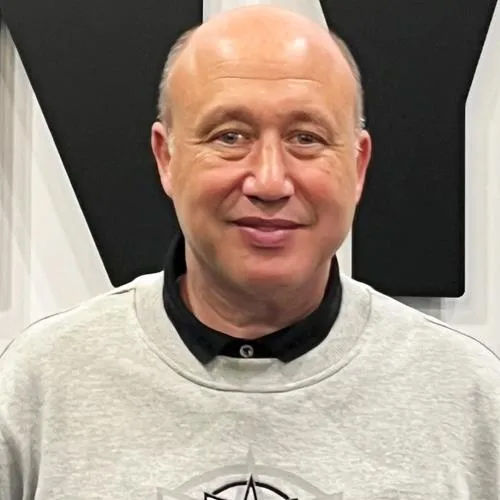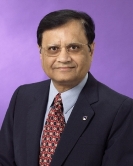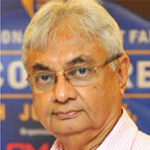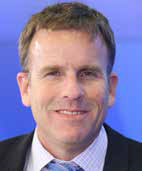
Marc Samuels
Managing Director
Powerplay Brands
Quality, comfort & great commercial designs are our non-negotiables
With a presence in over 5,000 retail stores across 50 countries worldwide, Powerplay Brands boasts of a portfolio of brands that contains some of the biggest global names in fashion and sports. Powerplay’s own in-house design, merchandising, and sourcing teams are able to innovate quickly creating bespoke trend-led apparel from a network of audited factories. The company designs, manufactures, markets and distributes licensed apparel products for some of the world’s most influential brands including Reebok, Pepe Jeans, DKNY, and Ben Sherman. Managing Director Marc Samuels chats with Fibre2Fashion about the journey of the brand, its USP, and future goals.
Fibre2Fashion: How has the journey been for the Powerplay Brands since its inception?
Marc Samuels:
The journey has been hard at times but also hugely fulfilling. That’s what running a business is like. I started the company when I was 21. At that time, we had only three employees, and there was much trial and error. Our business is set up in such a way that we will always be able to adapt to the market’s needs and demands. Our initial offering was producing our own label brand in the men, women, and kids’ categories which was sold to C&A, supermarkets, and high street retailers. Twenty years ago, we made the move to licenced products, working with the likes of Disney, Warner Brothers, and other entertainment licences which further expanded our growth. Our first branded licence was Ben Sherman, which really set the platform for further expansion. The game changer was no doubt Levi’s, its footprint carried us across Europe and transformed us from a UK-only business into a European player. I set up a huge distribution network across EMEA working with some great partners, some of whom we still work with today.
F2F: How does your team design and produce licensed apparel for four brands simultaneously (Reebok, Pepe Jeans, DKNY, and Ben Sherman)? Please describe your designing process in detail.
MS:
It’s about taking ownership of the product. We are provided a seasonal overview by the brand owners that includes logo usage, seasonal colour palette, typography etc. Our design team will then outline their seasonal direction taking into account all of the seasonal trends, forecasts, competitors, and data/market analytics. We know what works for the customers we have, which comes with experience and having a team that’s grown with the company. Samples are produced, developed, and then sent for final approval to the licence owners.
F2F: What makes your assortment and designs unique in a market that is crowded with loungewear and innerwear brands?
MS:
We are able to produce quality garments at an affordable price in our categories and have become strong advocates of data insights and try to implement them wherever possible in our decision making. Consumer needs have changed, particularly since the pandemic. So, whether it is extensive research into competitor products and looking at the benefits of new fabrications to reviewing how specific styles have performed against ones in previous collections, we do whatever is necessary.
F2F: How has the global loungewear and innerwear market changed over time?
MS:
To expand a little more on the previous answer, COVID-19 was a huge time of uncertainty for everyone in the world. We saw many businesses unable to keep their doors open and others trying to expand their footprint into digital. We were lucky enough to already be in those spaces. As the world started to adjust to the limitations around everyday life and ‘work from home’ became an in-thing, we saw a huge increase in demand for our products which we were able to facilitate.
F2F: In which geographies do you operate? Please tell us about managing logistics and distribution in those geographies.
MS:
We have traded globally in North America, South America, the Middle East, and Australasia but our core focus is the UK and EMEA. We started off with our UK warehouse as our sole distribution hub, but in 2020 with the impending Brexit decision looming, I made the bold decision to add another distribution centre in Europe to manage our ever-growing customer base. It was a risk but one that has seen the business thrive from all perspectives.
F2F: What type of marketing strategies—both digital and traditional—do you use to increase brand awareness and reach?
MS:
We have a tailored approach. It’s not a ‘one size fits all’ for our brands. Each brand has its own specific demands, markets, platforms, and audience. What might be right for DKNY might not be right for Reebok. Again, we go back to data which plays a huge role to help us understand who and where our customers are and then we engage with them where they feel most comfortable—be it online or offline.
F2F: Is there anything in particular that you favoured that has now become a defining feature for all your products?
MS:
Quality, comfort, and great commercial designs are three of our non-negotiables when it comes to products.
F2F: What techniques are used to uphold sustainability in your products? How do you ensure it?
MS:
Packaging has been something we have relooked at. We try to be as environmentally friendly as possible. We do have certain limitations especially when storing large amounts of stock in warehouses. We are currently looking at how to get rid of all plastics in our packaging. We currently use recycled polyester fabrics, bamboo, and organic cotton for a selection of our underwear.
F2F: Which product categories do you currently have? Do you have any plans to add more categories?
MS:
Our current categories are underwear, socks, loungewear, swimwear, and slippers. We have no plans yet to move into any additional categories. The market is quite volatile with the cost-of-living crisis, and we want to continue maximising our output in the categories we are experts in.
F2F: What are the future goals of Powerplay? Are you looking to collaborate with other brands?
MS:
We are always looking out for new opportunities within the brand licensing space. Our overall goal is to keep increasing our market share within our product categories. If a big brand is looking to sell and it is the right acquisition for us, then that would also be something I would be very interested in.
Aseem Prakash
Bill D’Arienzo
Fanny Vermandel
Pradip Mehta
Rahul Mehta
Arun Sirdeshmukh
Rahul Mehta
Anurag Batra
Gabi Seligsohn
Abhay Gupta









_8.JPG)



